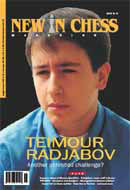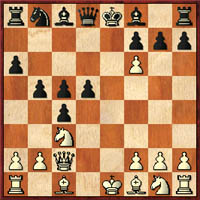|
Interesting Article on "Chess and War" in current New in Chess |
||
|
Many of us have been questioned about the game that we have a passion for… the 64-square battle we call chess. What is chess? Is it a sport, a science, an art, or a game? Depending on who you're talking to, your answer may take one of the four angles. |
||

|
The two spent the entire train ride discussing parallels of chess and military strategy to the point where they diagrammed famous battles in history and tried to create scenarios on the chessboard. Hall had illustrated the battle of Cannae where the Carthaginians under General Hannibal crushed the Romans with brilliant encirclement tactics and related it to a fascinating story of 1967 Swedish Champion, Rolf Martens. Martens came out of retirement to play in a 1984 blitz tournament and came in a respectable third. The article states, |
||
|
Martens founded the Stalingrad Gambit which is part of a system called the "Ultra-Hyper Modern Counter Attack" school for Black. It is said that this opening (diagrammed on the right) mimics the battles fought in World War II between the Russians and Germans. The position was reached after |
||

|
Chess simulation of the Battle of Stalingrad during World War II |
||